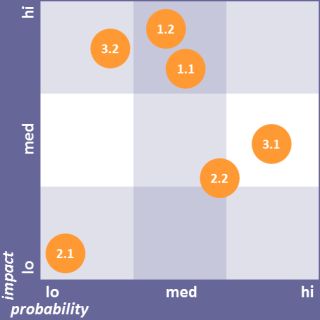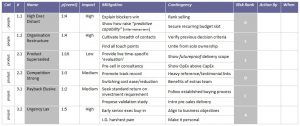Your Bid Risk Register Needn't Be 471 Years In The Making
The Mary Rose. Ye olde English warship. Which sank in 1545.
Much of the hull stayed submerged in mud until 1982. With huge fanfare a three-year salvage operation born from two-decade hope raised it from the murky Solent waters.
It’s taken until 2016 for the remains of the wooden vessel to be fully treated enabling survival on public display in its impressive new museum home.
The grand re-opening occurred this week. I caught one of those responsible for this wonderful effort herald the fact. She joked at one point about the depths their risk register went to during this process.
This brought back memories of the early-90s TQM movement. I thought of all the vaunted process improvement tools. Seen by outsiders as mainly burdensome unnecessary paperwork chores rather than sustainable success underpinning essentials. Especially by salespeople. ‘How dare you take time out of my selling’, they scream.
Yet the very same marvel at the achievements of technologists and sport winners. Superkeen to ape their methods. Which always involve this very type of structure the derided clipboard-holders are dismissed for.
(This in the same week Sir Dave Brailsford reveals yet more insight after another astounding Tour de France victory; including “don’t moan” & “take the problem to the person”).
Risk Register is perhaps one such tool that deserves a rethink.
On the face of it, they suffer the whiff of scenario planning. A maligned 70s big corporate high expense occupation. Little to do with the real world and few if any contigencies actively prepared for anyway
Project-by-project, such a lens can though have spectacular impact on identifying, honing and continuing your best practice sales process.
Wikipedia even has a page on it. Although at time of blogging here, their main example involved a “barbecue party”.
Now not everyone has a Sales Ops department these days. Starting such a log can be daunting. Ensuring it becomes a living, breathing piece of work seemingly beyond the horizon.
This may be more seamless should you (or your team) follow any proper (even rigid, big ticket) “process”.
If you do have a process in place, then the categories you can expand within will be pre-determined for you. Simply take that existing framework and build.
But you can make a start with basics for a platform. Here’s a selection of ten typical deal-breaking risks to begin with;
- Highest Exec Distant
- Payback Elusive
- Change Unwelcome
- Competition Strong
- Urgency Lax
- Budget Unallocated
- Contact Restriction
- Organisational Restructure
- Product Superseded
- Relationship Cut
By way of quick demo, I’ll take a half-dozen of these for this fictional worked example [click to view larger version]:
Not forgetting the scatterplot (with added subjective evolution);

To re-iterate, this tool works best when process risks are transposed onto it. Particularly as it ought not resemble a long objection handle or generic obstruction guide. Imagine a flipchart page stuck on your wall with this. When people are aware of the risks, the theory is that they tend not to happen. As advocates of the nuclear deterrent will no doubt tell you.


